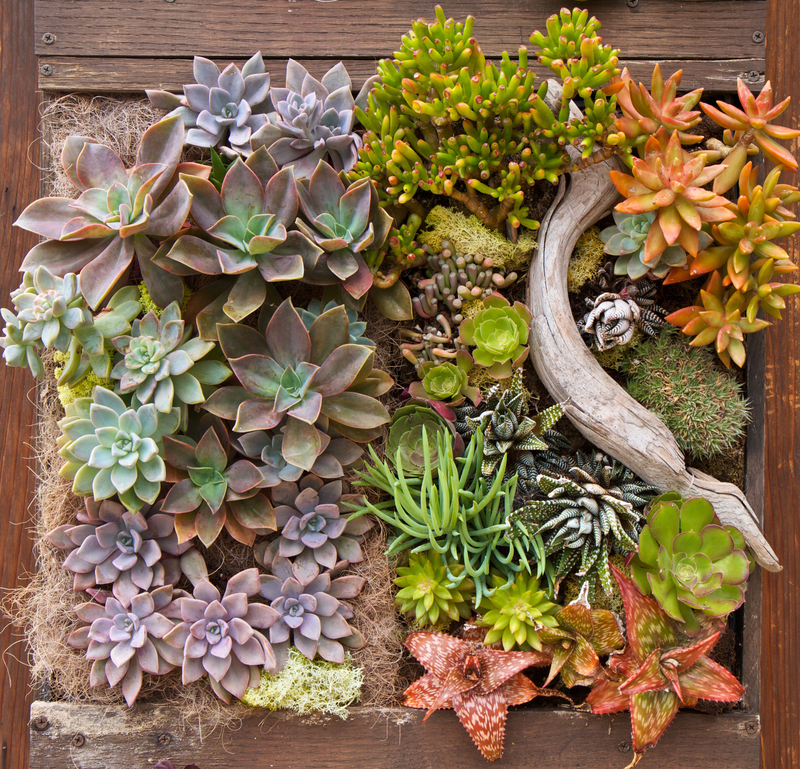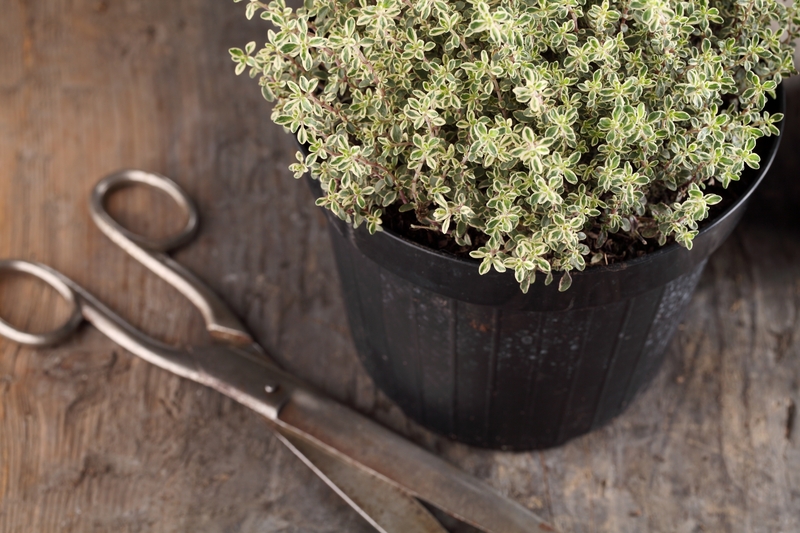Herbs, Vegetables, and More: Your Container Gardening Toolkit
Posted on 13/09/2025
Herbs, Vegetables, and More: Your Container Gardening Toolkit
Container gardening is a delightful and practical way to grow your own herbs, vegetables, and other plants, no matter your living situation. Whether you have a spacious backyard, a tiny balcony, or just a sunny windowsill, you can build a vibrant and productive container garden with ease. In this comprehensive guide, discover everything you need to know about growing herbs and vegetables in containers--from the fundamental tools to which plants thrive in pots, alongside expert tips for a successful and bountiful harvest.
Why Choose Container Gardening?
Container gardening is rapidly rising in popularity, and for good reason. Let's explore some compelling benefits that make it so appealing:
- Space-Efficient: Perfect for urban environments, small yards, or apartments.
- Versatility: Move plants to catch the sun, or bring them indoors during bad weather.
- Accessibility: Elevate containers for easier reach--great for people with mobility challenges.
- Pest and Disease Control: Isolate plants to protect against pests or prevent the spread of disease.
- Creative Expression: Mix and match attractive pots, planters, and different plant combinations.
Container vegetable gardens and indoor herb gardens are perfect for beginners, busy gardeners, and even kids. With the right toolkit, anyone can succeed!

Your Ultimate Container Gardening Toolkit
Setting up your container gardening toolkit ensures you have all the essentials to nurture herbs, vegetables, fruits, and flowers. Here are the must-haves for every container gardener:
1. Select the Right Containers
Your choice of containers is critical for both aesthetics and plant health. Consider these options:
- Terracotta and Clay Pots: Beautiful and breathable, but can dry out quickly.
- Plastic Pots: Lightweight, retain moisture, and budget-friendly.
- Wooden Planters: Natural look; be sure they're rot-resistant for longevity.
- Self-Watering Containers: Perfect for busy gardeners or hot climates.
- Upcycled Containers: Repurpose buckets, crates, or even old shoes for a creative twist!
Tip: Whatever you choose, ensure containers have drainage holes to avoid soggy roots and plant diseases.
2. The Perfect Potting Mix
Ordinary garden soil isn't suitable for containers. Instead, opt for a high-quality potting mix. Here's what to look for:
- Lightweight and Well-Draining: Allows air to reach roots and excess water to escape.
- Rich in Organic Matter: Helps retain enough moisture and support plant health.
- Optional Additives: Mix in compost, perlite, or coconut coir for improved results.
3. Gardening Tools for Containers
Basic hand tools are usually enough for container vegetable gardens and herb pots. Equip yourself with:
- Trowel: For digging, transplanting, and mixing soil.
- Pruners or Scissors: Keep plants in shape and harvest fresh herbs easily.
- Watering Can or Hose: Preferably one with a gentle spray attachment.
- Hand Fork: Useful for aerating soil and removing weeds.
- Gloves: Protect your hands from soil and insects.
- Plant Labels: Helpful for tracking different herbs and veggies.
4. Fertilizers and Plant Food
Container-grown plants often need extra nutrients, so fertilize regularly with an appropriate product:
- Organic Plant Foods: Like compost tea, worm castings, or fish emulsion.
- Slow-Release Granules: Convenient and easy to apply at planting time.
- Liquid Fertilizers: For a quick nutrient boost, dilute and feed every 2-4 weeks.
Note: Over-fertilizing can harm roots--follow product directions for best results.
5. Plant Supports
Many veggies--including tomatoes, peppers, and peas--benefit from extra support in containers. Options include:
- Stakes and Cages: Essential for climbing or sprawling plants.
- Trellises: Great for cucumbers, beans, or even ornamental vines.
Best Herbs and Vegetables for Container Gardening
One of the joys of container gardening vegetables and herbs is their adaptability to pots and planters. If you're unsure where to start, here are reliable favorites for your container toolkit:
Top Herbs to Grow in Containers
- Basil: Thrives in warm, sunny spots. Pinch back for bushier growth.
- Parsley: Curly or flat-leaf varieties flourish in partial shade or sun.
- Chives: Hardy, easy to grow, and returns year after year.
- Cilantro: Loves cool weather and frequent harvesting.
- Mint: Rapid grower--best in a separate pot to prevent spreading.
- Oregano, Thyme, and Rosemary: Mediterranean herbs that excel in containers with well-draining soil.
Popular Vegetables for Pots
- Tomatoes: Choose compact or cherry varieties. Use cages for support.
- Peppers: Sweet or chili peppers grow well in sunny containers.
- Lettuce and Spinach: Fast-growing; harvest leaves as needed.
- Radishes: Perfect for shallow pots and quick harvests.
- Carrots: Pick short or round-rooted types for best results.
- Green Beans: Bush types are best, or use a trellis for climbing varieties.
- Zucchini: Compact bush varieties suit larger pots.
Other Edible Options
Don't overlook small fruiting plants and unusual edibles for your container gardening toolkit:
- Strawberries: Hang them in baskets or plant in window boxes.
- Dwarf Blueberries: Need acidic potting mix but reward with delicious harvests.
- Lemongrass: Striking and useful in Asian cuisine.
- Edible Flowers: Nasturtiums and calendula double as food and ornament.
Tips for Successful Container Gardening
Now that you've assembled your garden container toolkit and picked your plants, maximize your success with these expert strategies:
1. Sunlight and Placement
Most vegetables and herbs need at least 6-8 hours of sunlight. South or west-facing spots are ideal. Rotate pots as needed for even growth, and use saucers to prevent water stains on patios or decks.
2. Smart Watering Habits
- Check Daily: Containers dry out faster than in-ground gardens--water when the top inch feels dry.
- Deep Watering: Water until liquid drains from the base, ensuring roots are hydrated.
- Morning Routine: Water early in the day to prevent fungal issues and reduce evaporation.
3. Soil Refresh and Repotting
Replace spent soil at least once a year, especially if replanting the same pot. For perennials like mint or chives, refresh the top few inches with rich compost each season.
4. Watch for Pests and Diseases
Container gardening isn't immune to trouble. Look out for aphids, spider mites, slugs, and fungal spots. Keep your toolkit handy:
- Pinch or prune affected leaves promptly.
- Use organic sprays like neem oil as needed.
- Encourage beneficial insects or companion plants for natural defense.
5. Fertilize and Mulch
Feed your plants regularly, and consider adding a thin layer of organic mulch--like straw or shredded bark--to conserve moisture and regulate soil temperature.
Arranging and Designing Your Container Garden
The beauty of container gardening is in the creative freedom it offers. Use these layout suggestions for an attractive, productive oasis:
- Group containers by sunlight and water needs for easy care.
- Mix edible herbs with flowering plants for both function and color.
- Layer heights--tall plants at the back, trailing or creeping herbs at the front.
- Use plant stands, shelves, or railing boxes to maximize vertical space.
- Personalize with colorful pots, garden art, or upcycled furniture.
Seasonal Care for Year-Round Container Gardening
With planning, your container garden can produce year-round. Here's how:
Spring and Summer
- Start heat-loving veggies and herbs after the last frost.
- Tend to pollinators by adding marigolds, calendula, or lavender.
- Harvest regularly for continuous growth and to encourage new shoots.
Fall Tips
- Switch to cool-season crops like kale, lettuce, or parsley.
- Bring tender pots indoors if frost threatens.
Winter Protection
- Group containers in sheltered spots or wrap pots to insulate roots.
- Grow microgreens or windowsill herbs indoors for fresh greens all winter.

Common Questions About Container Gardening
Q: Can any vegetable or herb grow in a pot?
A: Most herbs and vegetables thrive in containers if their needs are met. For best results, select compact or dwarf varieties and provide deep enough pots for root growth--usually at least 6-12 inches deep.
Q: How often should I fertilize container garden plants?
A: Since nutrients wash out of pots more quickly, feed every 2-4 weeks during the growing season, or use slow-release granules as directed at planting time.
Q: What size pot should I use for different plants?
- Herbs: 6-8 inch wide pots are ideal for singles; groupings do well in window boxes or 12-inch planters.
- Tomatoes/Peppers: At least 5 gallons per plant for healthy roots.
- Lettuce/Spinach: Shallow boxes or bowls (6-8 inches deep) are fine.
- Root crops (carrots, radishes): Choose deeper containers to accommodate long roots.
Conclusion: Build Your Own Bounty with a Container Gardening Toolkit
A lush, edible container garden is within reach, whether you're a beginner or a seasoned green thumb. Start with the right container gardening toolkit--quality containers, good potting mix, simple tools, plant supports, and fertilizers. Add your favorite herbs and vegetables for pots, personalize your space, and enjoy the endless rewards of gardening on your own terms. With patience, experimentation, and care, your small containers can yield a season's worth (or more) of fresh, homegrown produce and herbal delights. Happy gardening!

